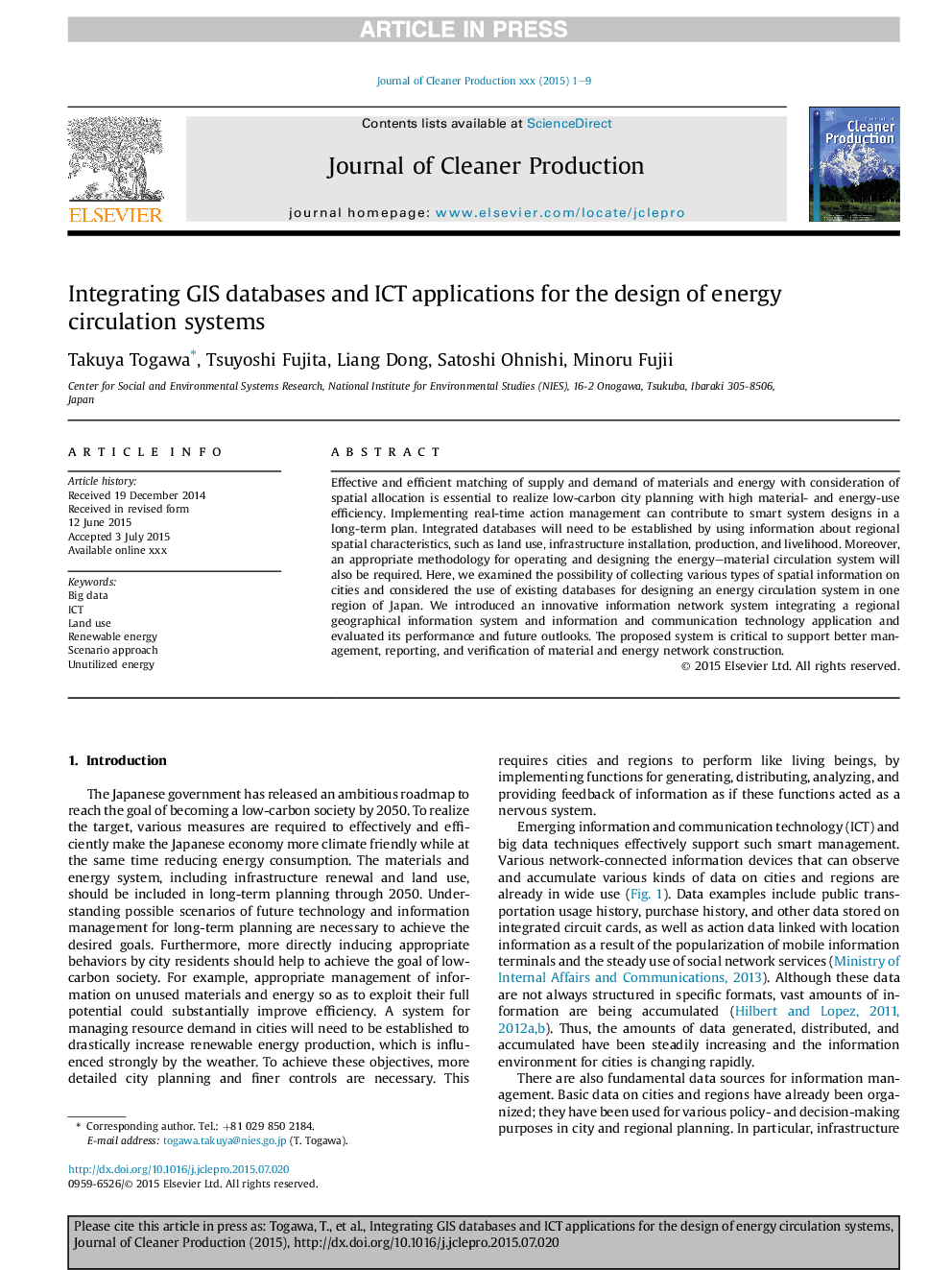| Article ID | Journal | Published Year | Pages | File Type |
|---|---|---|---|---|
| 8102729 | Journal of Cleaner Production | 2016 | 9 Pages |
Abstract
Effective and efficient matching of supply and demand of materials and energy with consideration of spatial allocation is essential to realize low-carbon city planning with high material- and energy-use efficiency. Implementing real-time action management can contribute to smart system designs in a long-term plan. Integrated databases will need to be established by using information about regional spatial characteristics, such as land use, infrastructure installation, production, and livelihood. Moreover, an appropriate methodology for operating and designing the energy-material circulation system will also be required. Here, we examined the possibility of collecting various types of spatial information on cities and considered the use of existing databases for designing an energy circulation system in one region of Japan. We introduced an innovative information network system integrating a regional geographical information system and information and communication technology application and evaluated its performance and future outlooks. The proposed system is critical to support better management, reporting, and verification of material and energy network construction.
Related Topics
Physical Sciences and Engineering
Energy
Renewable Energy, Sustainability and the Environment
Authors
Takuya Togawa, Tsuyoshi Fujita, Liang Dong, Satoshi Ohnishi, Minoru Fujii,
